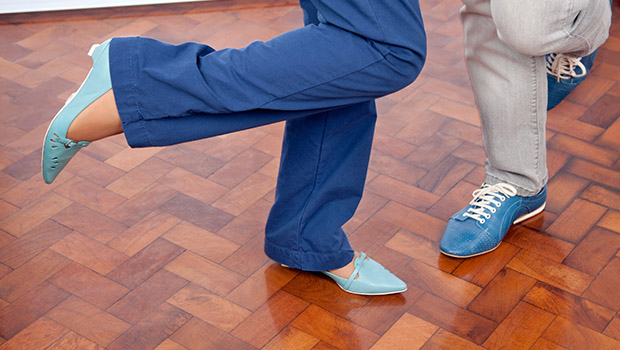5 Easy Steps to Care for Your Feet

Integrated Diabetes Services (IDS) provides detailed advice and coaching on diabetes management from certified diabetes educators and dieticians. Insulin Nation and Type 2 Nation hosts a regular Q&A column from IDS that answers questions submitted from the diabetes community.
Q- I hear people with diabetes need to take special care of their feet. How? Can I wear sandals with diabetes? What about high heeled shoes?
A – It can be easy to forget to look at your feet, especially if they feel just fine, but this is actually the best time to take a look. If they feel great, you want to keep them feeling this way.
Diabetes can be hard on feet over time because high blood glucose levels can cause nerve damage. This damage can cause your feet, the extremities farthest from your heart and brain, to feel numb or even painful. Without proper sensation, you may not feel when you have an injury or if your shoes fit too tight, which can lead to calluses, blisters, or other wounds. If uncared for, these wounds can get infected and heal more slowly if blood sugar is high and/or you already have poor blood flow in your feet from other conditions like peripheral artery disease.
[adrotate banner=”29″]
Follow these steps to help keep your feet feeling their best:
1. Check your feet every day.
Evaluate your feet every time you take a shower, or every time you put on or take off your socks and shoes. Look for red areas, blisters, sore or irritated skin as well as scratches or cuts. If it is hard to see the bottom of your feet, use a mirror on the floor to look at the bottom and sides.
2. Apply Moisture.
Avoid letting the skin on your feet get too dry. Rub in a thick, moisture-rich lotion, but don’t put it between your toes—these dark, moist areas are great places for bacteria to build up and cause infection.
3. Protect your feet with well-fitted shoes.
Shoes should be snug but not too tight. There should be room to wiggle your toes in the shoe. If you have foot problems, have your feet measured and fitted at a shoe store to ensure the shoes you choose will work well. Walk around a shoe store to try out the shoes. If you feel any areas that rub or feel too tight, choose another brand or different size. Try to avoid walking barefoot. Sandals and shoes with heels are fine to wear as long as they do not rub or cause injury when worn. High heels can put pressure on the balls of your feet, though, so be cautious and evaluate how your feet feel and look after wearing heeled shoes. (The smart aleck answer may be that your feet look “fabulous” in them…but too often they will look angry once you take them off.)
4. Show your feet to your health care provider at every office visit.
The American Diabetes Association recommends a comprehensive foot exam annually for all people with diabetes. If you are prone to foot problems or have conditions such as hammer toes, overlapping toes, or bunions, see a podiatrist yearly or as recommended by the treating physician.
5. Manage blood sugar.
This is the best preventative medicine. Keeping blood sugar values in the target range can prevent damage to your nerves and preserve sensation in your feet. This will help you be able to identify if/when you’ve had an injury and allow you to treat it faster.
The takeaways? Examine those feet, try to make them feel comfortable at all times, and get help as soon as you see a problem.
Submit your questions to [email protected]. All questions will be answered, and yours may be chosen to appear on Insulin Nation or Type 2 Nation.
Integrated Diabetes Services provides one-on-one education and glucose regulation for people who use insulin. Diabetes “coaching” services are available in-person and remotely via phone and online for children and adults. Integrated Diabetes Services offers specialized services for insulin pump and continuous glucose monitor users, athletes, pregnancy & Type 1 diabetes, and those with Type 2 diabetes who require insulin. For more information, call 1-610-642-6055, or write [email protected].
Want more news on Type 2 diabetes? Subscribe to our newsletter here.





